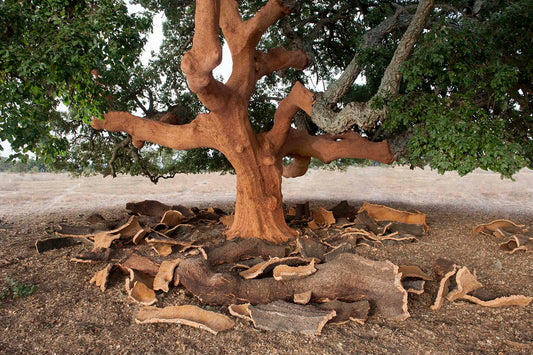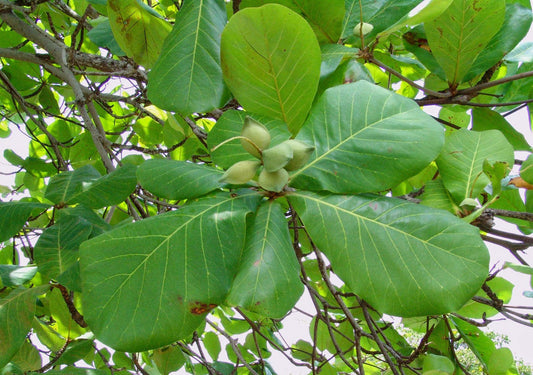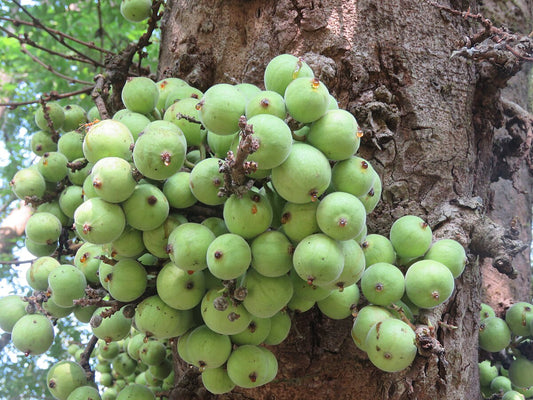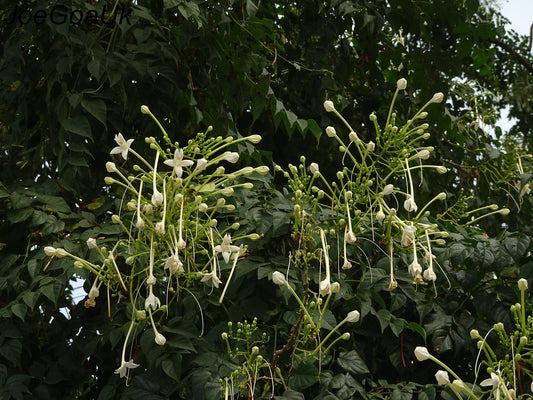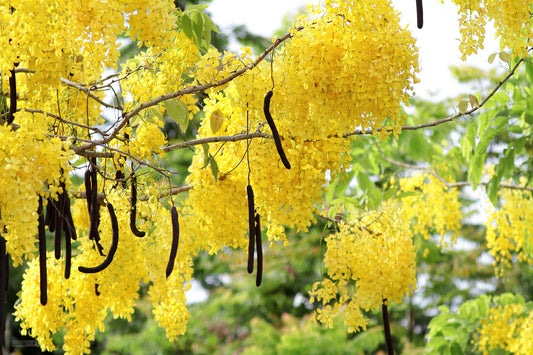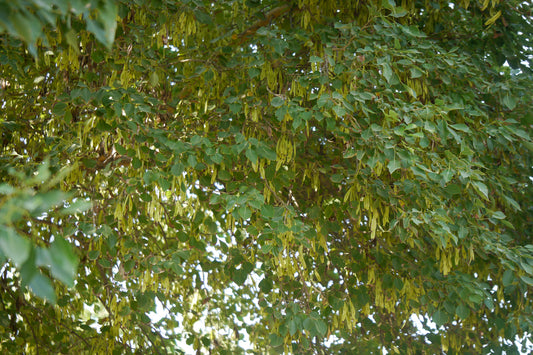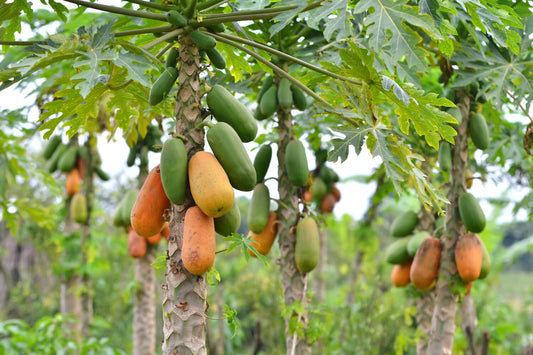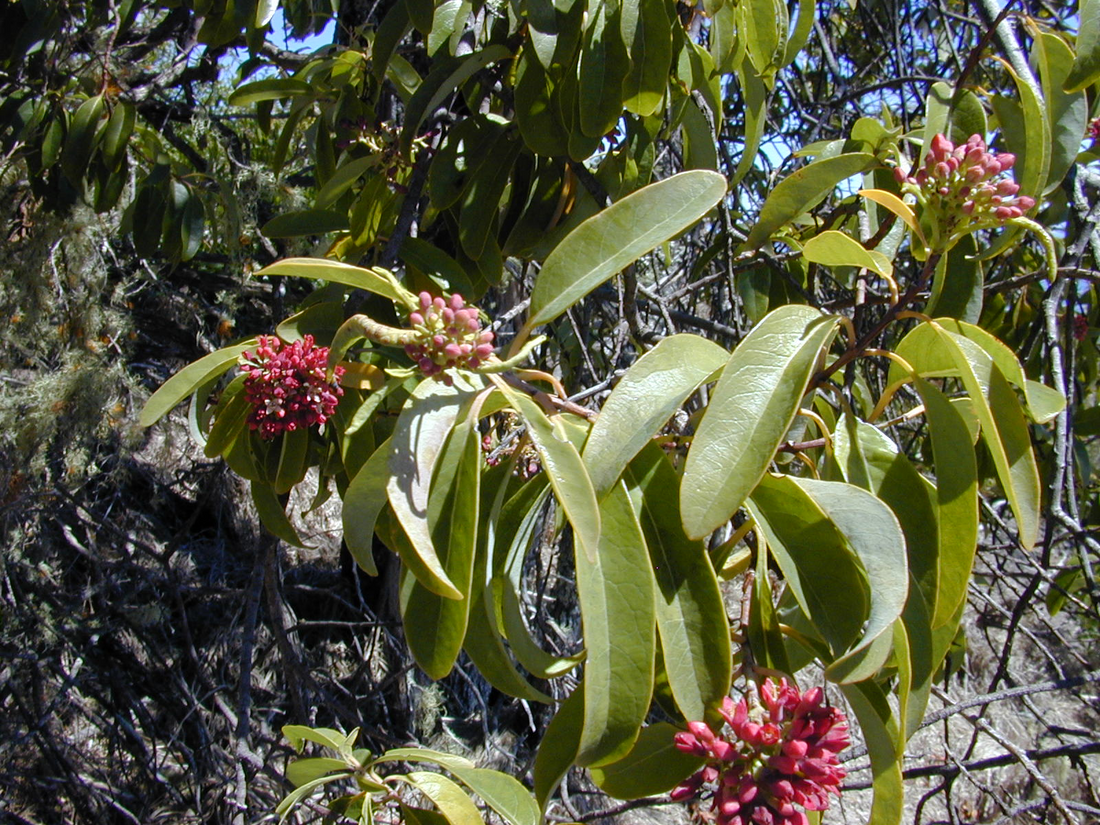

Sandalwood trees are fascinating in their parasitic nature, requiring host trees for nutrients in their early stages. This unique dependency adds intrigue to their botanical character and makes them subjects of extensive study in botany and forestry. Despite their reliance on other trees Read more
Trending
Trees for Corporates
Sandalwood Tree
You may also like
Corporate Plantations
Sandalwood Tree Facts
Explore intriguing facts about the Sandalwood tree, prized for its fragrant heartwood, aromatic oil, and cultural significance. Learn about its botanical name (Santalum album), native range, and historical uses in perfumery, religious rituals, and traditional medicine.
Sandalwood Tree Care
Discover essential care tips for growing and maintaining Sandalwood trees in tropical and subtropical climates. From selecting suitable planting sites to managing soil, water, and pests, learn how to nurture these valuable trees for optimal growth and heartwood production.
Sandalwood Tree Heartwood Production
Learn about the factors influencing Sandalwood tree heartwood production and the harvesting of sandalwood. From tree age and genetics to environmental conditions and sustainable harvesting practices, various factors affect the quantity and quality of sandalwood heartwood, prized for its aroma and value in global markets.
Sandalwood Tree Aromatic Uses
Explore the aromatic uses of Sandalwood oil in perfumery, cosmetics, and aromatherapy. From blending essential oils for fragrances to crafting skincare products and incense, Sandalwood oil is valued for its rich, woody scent and therapeutic properties.
Sandalwood Tree Medicinal Uses
Discover the medicinal properties of Sandalwood heartwood, oil, and bark in traditional medicine systems. From treating skin disorders and respiratory ailments to promoting mental clarity and relaxation, Sandalwood has been valued for its therapeutic benefits for millennia.
Sandalwood Tree Symbolism
Delve into the cultural symbolism of the Sandalwood tree in mythology, religion, and spiritual practices. Revered for its association with purity, spirituality, and enlightenment, the Sandalwood tree symbolizes divinity, inner peace, and sacredness in various cultural traditions.
Sandalwood Tree Habitat
Learn about the natural habitat of Sandalwood trees, including tropical and subtropical forests, woodlands, and scrublands. From well-drained, sandy soils to humid climates with distinct wet and dry seasons, Sandalwood trees thrive in diverse ecosystems, providing habitat and sustenance for wildlife.
Sandalwood Tree Growth Rate
Gain insights into the growth rate and development of Sandalwood trees under optimal growing conditions. With slow to moderate growth rates, Sandalwood trees can attain mature sizes and heartwood quality over several decades, contributing to forest structure and biodiversity.
Sandalwood Tree Pruning
Learn about the importance of pruning Sandalwood trees to remove deadwood, promote airflow, and enhance heartwood formation. Explore pruning techniques, timing, and safety precautions for maintaining productive and aesthetically pleasing Sandalwood plantations.
Sandalwood Tree Flowering Season
Discover the flowering season of Sandalwood trees and the unique structure of sandalwood flowers. From small, inconspicuous blooms to pollination by insects or wind, Sandalwood trees exhibit fascinating reproductive biology and ecological interactions.
Sandalwood Tree Leaf Characteristics
Explore the distinctive characteristics of Sandalwood leaves, including their elliptical shape, glossy texture, and aromatic properties. With adaptations for maximizing photosynthesis and minimizing water loss, Sandalwood leaves are well-suited to tropical climates and seasonal changes.
Sandalwood Tree Root System
Learn about the root system of Sandalwood trees and its role in anchoring the tree, accessing water and nutrients, and stabilizing soil. With shallow, spreading roots, Sandalwood trees contribute to soil stability, erosion control, and water retention in tropical ecosystems.
Sandalwood Tree Wildlife Habitat
Discover the importance of Sandalwood trees as habitat and food sources for wildlife in tropical forests. From birds and mammals to insects and fungi, Sandalwood trees support a diverse array of species, contributing to biodiversity conservation and ecological balance.
Sandalwood Tree Soil Requirements
Learn about the soil requirements for growing Sandalwood trees and optimizing their health and heartwood production. From well-drained, loamy soils to sandy or rocky substrates with good aeration and moisture retention, Sandalwood trees exhibit adaptability to various soil types.
Sandalwood Tree Pest and Disease Management
Discover common pests and diseases that affect Sandalwood trees and strategies for prevention and control. From fungal pathogens and wood borers to root rot and leaf spot diseases, proactive management practices can help minimize the impact of pests and diseases on tree health and heartwood quality.
Sandalwood Tree Root Pruning
Learn about root pruning techniques for Sandalwood trees to address root-related issues and promote tree health and stability. From improving soil structure and drainage to preventing root girdling and overcrowding, root pruning can enhance the vigor and longevity of Sandalwood trees.
Sandalwood Tree Indigenous Knowledge
Explore traditional knowledge and practices associated with Sandalwood trees in tropical cultures and indigenous communities. From folklore and spiritual rituals to sustainable harvesting techniques and forest management, Sandalwood trees hold cultural significance and ecological value in various human societies.
Sandalwood Tree Ethnobotany
Learn about the ethnobotanical uses of Sandalwood trees in medicine, religion, and crafts. From carving sacred objects and temple decorations to using sandalwood oil in religious ceremonies and spiritual practices, Sandalwood trees have provided essential resources and cultural heritage for millennia.
Sandalwood Tree Cultivars
Explore the diversity of Sandalwood tree cultivars and their unique characteristics in terms of heartwood quality, oil content, and growth habits. From commercial varieties such as 'Mysore' and 'Australian' to locally adapted landraces and hybrids, Sandalwood enthusiasts can choose from a wide range of options for plantation establishment and heartwood production.
Sandalwood Tree Cultural Heritage
Discover the cultural heritage and historical significance of Sandalwood trees in art, literature, and trade networks. From ancient trade routes and royal patronage to modern conservation efforts and sustainable livelihoods, Sandalwood trees have inspired human creativity and economic prosperity across cultures and centuries.
FAQ
What is a sandalwood tree?
The sandalwood tree, scientifically known as Santalum album, is a fragrant evergreen tree native to the Indian subcontinent and Southeast Asia. It is renowned for its aromatic heartwood, which is used in perfumes, cosmetics, and religious ceremonies.
Where are sandalwood trees typically found?
Sandalwood trees are primarily found in regions with tropical and subtropical climates, including India, Sri Lanka, Indonesia, Australia, and the Pacific Islands. They thrive in diverse habitats, ranging from dry forests to moist rainforests.
How tall can a sandalwood tree grow?
Sandalwood trees typically grow to heights of 4 to 9 meters, with some specimens reaching up to 12 meters under optimal growing conditions. Their small stature allows for efficient cultivation and management in agroforestry systems.
What climate do sandalwood trees prefer?
Sandalwood trees prefer warm, tropical climates with well-defined dry and wet seasons. They thrive in regions with temperatures ranging from 20°C to 30°C and annual rainfall between 600 to 2,000 millimeters.
How long until a sandalwood tree yields heartwood?
Sandalwood trees require considerable time to produce heartwood suitable for harvesting. It takes around 15 to 20 years for the trees to develop the highly aromatic heartwood prized for its fragrance and commercial value.
How is sandalwood harvested?
Sandalwood harvesting involves carefully extracting the heartwood from mature trees without causing damage to the tree or surrounding ecosystem. The heartwood is then processed to extract the valuable essential oil, which is used in various industries.
Is sandalwood oil extracted from the heartwood?
Yes, sandalwood oil is extracted from the heartwood of the sandalwood tree through a process called steam distillation. The heartwood contains high concentrations of aromatic compounds, which impart the characteristic fragrance to the oil.
What is the economic importance of sandalwood trees?
Sandalwood trees are economically significant due to the high value of their heartwood, which is used in perfumery, cosmetics, aromatherapy, and traditional medicine. Sandalwood oil is a valuable commodity in global markets, contributing to regional economies and livelihoods.
Are sandalwood trees endangered?
Due to overexploitation, habitat loss, and illegal logging, many species of sandalwood trees are considered endangered or threatened. Sustainable management practices and conservation efforts are essential to preserve these valuable tree species.
Do sandalwood trees have any cultural significance?
Sandalwood trees hold cultural and religious significance in many cultures, particularly in India and Southeast Asia. Sandalwood paste and oil are used in religious rituals, ceremonies, and traditional medicine, symbolizing purity, spirituality, and auspiciousness.
What pests and diseases affect sandalwood trees?
Sandalwood trees are susceptible to various pests and diseases that can impact their growth and health. Common pests include scale insects, mealybugs, and sandalwood shoot borers, while diseases such as root rot and leaf spot can also affect tree vigor and productivity.
Can sandalwood trees be grown outside their native range?
Sandalwood trees can be cultivated outside their native range in suitable climates with proper soil conditions and management practices. However, successful cultivation requires careful attention to site selection, irrigation, and pest control to ensure optimal growth and heartwood production.
How do sandalwood trees propagate?
Sandalwood trees can be propagated through seeds, cuttings, or tissue culture techniques. Seed propagation is the most common method, with seeds collected from mature fruits and germinated under controlled conditions before being transplanted to the field.
What are the environmental benefits of sandalwood trees?
Sandalwood trees provide various environmental benefits, including carbon sequestration, soil stabilization, and biodiversity conservation. Their deep root systems help prevent soil erosion, while their canopy provides shade and habitat for wildlife.
What are the different uses of sandalwood?
Sandalwood is used in various industries and applications, including perfumery, cosmetics, aromatherapy, incense, and traditional medicine. It is valued for its aromatic properties, which impart a rich, woody fragrance to products and promote relaxation and well-being.
What is the significance of sandalwood in Ayurveda?
Sandalwood holds a prominent place in Ayurvedic medicine, where it is used to treat various ailments and promote holistic well-being. It is believed to have cooling, soothing, and anti-inflammatory properties, making it useful for skin care, respiratory health, and stress relief.
Are there different varieties of sandalwood?
Yes, there are several species of sandalwood trees, each with unique characteristics and fragrance profiles. Santalum album, or Indian sandalwood, is the most commercially important species, prized for its high-quality heartwood and fragrance. Other species include Santalum spicatum (Australian sandalwood) and Santalum austrocaledonicum (Pacific sandalwood).
How does sandalwood cultivation benefit local communities?
Sandalwood cultivation provides valuable income and employment opportunities for local communities, particularly in rural and indigenous areas where the trees are grown. It supports livelihoods along the value chain, from seedling production and cultivation to harvesting, processing, and marketing of sandalwood products.
What are the challenges faced in sandalwood cultivation?
Sandalwood cultivation faces various challenges, including long gestation periods, vulnerability to pests and diseases, and limited availability of quality planting material. Sustainable management practices, research, and collaboration among stakeholders are essential to address these challenges and promote the viability of sandalwood cultivation.
Is sandalwood cultivation environmentally sustainable?
Sandalwood cultivation can be environmentally sustainable when practiced using agroforestry and silvicultural techniques that promote biodiversity, soil health, and water conservation. However, unsustainable harvesting practices and illegal logging pose significant threats to sandalwood ecosystems and require stringent regulations and enforcement measures to mitigate their impact.
Most Popular
Connect with us
-
👥 Corporates
If you are looking for:
- 🌲 Tree Plantation Events
- 📊 CSR Projects
📧 corporate@growbilliontrees.com
📞 +91 9699723523
💬 WhatsApp (Only): +91 9370599291
🕒 Mon - Sat | 10am - 7pm IST
-
🧩 Tree Plantation NGOs
If you are looking for:
- 💰 Financial Assistance
- 🤝 Operational Support
📧 support@growbilliontrees.com
📞 +91 9699723523
💬 WhatsApp (Only): +91 9370599291
🕒 Mon - Sat | 10am - 7pm IST
-
🌼 Individuals
If you are looking for:
- 👥 Group Tree Plantation Drive
- 🌳 Bulk Tree Plantation
📞 +91 9699723523
💬 WhatsApp (Only): +91 9370599291
🕒 Mon - Sat | 10am - 7pm IST





















